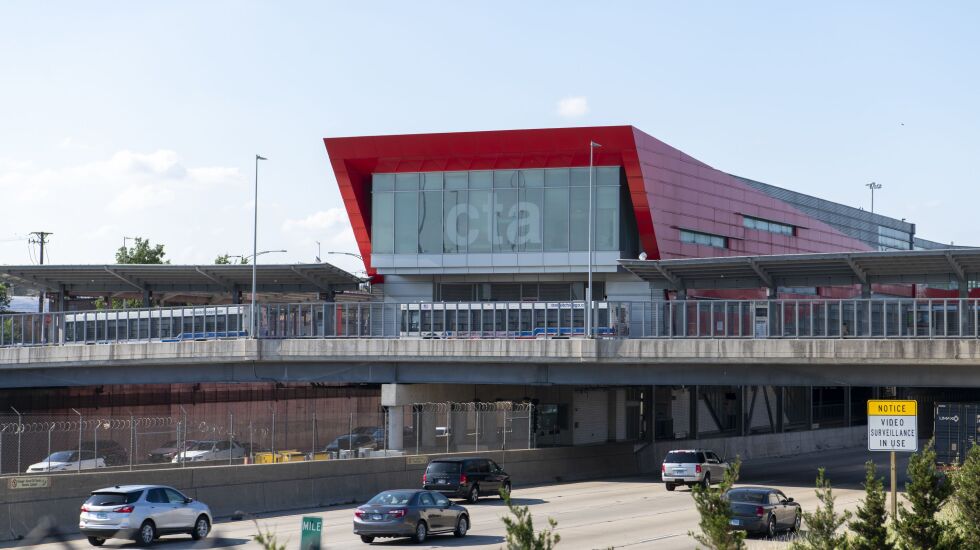
The current debate about extending the Chicago Transit Authority’s Red Line to the city limits from its current terminus at 95th Street isn’t just a transportation story. It’s really about the fundamental issues of equity, opportunity and affordability in urban America today.
Of course, the Far South Side needs the Red Line extension so that the 100,000 residents in the immediate service area have access to the same levels of public transit as the rest of Chicago. Moreover, many thousands more in adjacent Chicago neighborhoods and suburbs would also benefit.
But the extension is also about housing affordability, which most affects low- and moderate-income people. Today, Roseland and some neighboring Far South Side communities have high-quality, affordable housing stock available. For years, they have been some of the more stable neighborhoods for homeownership. But they need public transit access, so adults can get to jobs and their children can get to school.
Chicago has also been losing Black population for 40 years. Better transit access is needed to slow or reverse the Black exodus to the suburbs and beyond.
Economic opportunity is another issue. Public infrastructure investment will spur private investment, supporting local businesses and institutions and creating community amenities like those that are commonplace elsewhere in the city.
Less transit, more driving
Today, Roseland residents spend hours on public transit to get to jobs downtown and across the city. While we all believe the Red Line extension will create more jobs in Roseland, most new jobs being created are downtown and elsewhere in the Chicagoland region.
Those employers will need workers, and we should make it as easy as possible for far South Side residents to get to work. It’s neither fair nor smart to have people spending three or four hours each day commuting. Lack of public transit also encourages driving — a bad policy for our city, particularly during our current energy and climate crises.
We also want the rest of Chicago to come to the Far South Side and support its retail and cultural assets. South Michigan Avenue from 111th to 119th was once a thriving retail area. It can be again, but only if people can get there. The Pullman Historic District is a national landmark, an ideal place for families seeking to soak up some Chicago history.
In turn, residents on the Far South Side will have an enriched quality of life with easier access to cultural and civic amenities in other parts of Chicago. They deserve to share fully in all of the benefits of life in our great city.
The Chicago Plan Commission correctly moved this project forward recently. Ultimately, the City Council will make the final decision on whether to dedicate downtown tax increment financing (TIF) dollars to cover the local share of a project that will create thousands of construction jobs and thousands of other permanent jobs.
The argument that a TIF district downtown and on the Near South Side should not fund transit improvements on the Far South Side doesn’t hold water. The Red and Purple Modernization project benefitted from a transit TIF that includes significant portions of Lincoln Park, just outside the project’s footprint. Meanwhile, CTA is making major investments on other parts of its system with local, state and federal resources, including the Blue Line Forest Park Branch reconstruction that will benefit West Side and suburban riders.
Let’s all think long-term and consider not only the best interests of Roseland and other Far South Side residents, but also the self-interest of residents elsewhere. If they want their communities to thrive, all communities must thrive. If they want the city’s tax burden shared more broadly, the tax base must grow in every neighborhood.
If we want growth everywhere instead of only in places where it’s already happening, we must invest in the fundamental building blocks of healthy communities. Few other transportation projects in Chicago have the same potential for economic growth, housing affordability, population growth, and neighborhood development and stability.
Over the years, Far South Side property taxpayers have funded improvements to other communities. Now, it’s their turn.
Teresa Prim is the co-founder of Prim Lawrence Group, a consulting firm on community economic and real estate development. She lives in Roseland.
Meghan Harte is the executive director of LISC (Local Initiatives Support Corp.) Chicago, the local office of a national community development finance institution.
The Sun-Times welcomes letters to the editor and op-eds. See our guidelines.
The views and opinions expressed by contributors are their own and do not necessarily reflect those of the Chicago Sun-Times or any of its affiliates.







